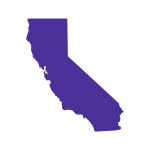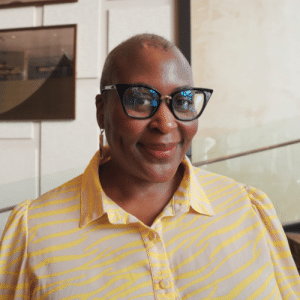2024 Aurora Institute Field Survey: Strategies and Practices that Advance CBE
CompetencyWorks Blog
The work of driving systems transformation requires working effectively with others in the field – sharing lessons learned and best practices. To that end, each year we scan the field for competency-based education (CBE) practice and policy catalysts and roadblocks through our Field Survey. We ask our partners to address several topics related to CBE policy, practice, and resources. This year, our survey included six topic areas:
- Strategies or practices that have been most helpful in advancing competency-based learning.
- Resources, technologies, and/or tools needed to support competency-based learning.
- Policies enabling implementation of competency-based learning
- School, district, or state policy changes required to support competency-based learning implementation.
- The importance of CBE topics, including paid work-based learning and increasing educator diversity.
- Annual Symposium and CompetencyWorks blog topics.
This year, we heard from 143 educators, leaders, policymakers, funders, education solution providers, and non-profit practitioners. Respondents represent 34 states, the District of Columbia, Puerto Rico, and the international community.

There was also representation from multiple levels of the education sector. However, as shown in the graph below, secondary education had the highest representation, with 71 percent of the respondents serving learners across grades 9 through 12.

Note. Results for the question, “Which levels do you serve (select all that apply)?” Number respondents (N) = 143. “Other” includes author, adult education, leadership roles.
We will present the survey results by topic area in four blogs:
- Strategies and practices that advance CBE
- Opportunities for resource development to support CBE
- State and local policies that advance CBE, and opportunities for policy development
- CBE topics the field finds important
CBE Strategies and Practices
Aurora asked partners to contribute the strategies and practices they have found most helpful in advancing CBE. Responses (N=136) coalesced around strategies and practices that drive high-level systems change (e.g., reimagining accountability) and those that facilitate CBE implementation (e.g., professional learning). We coded the responses and organized these strategies and practices by five themes, including “not there yet,” as shown in Table 1 below. The results show 47 percent of the responses focused on strengthening the quality of CBE implementation. Another 38 percent focused on systems-level strategies that support transitions from traditional systems and practices to CBE.
Table 1. High-level themes of strategies and practices
| Theme | Frequency | Percent |
| Driving High-Quality CBE Implementation | 73 | 47% |
| Developing Coalitions for a Successful Transition to CBE | 29 | 19% |
| “Not there yet”* or No Response | 24 | 13% |
| Building a Holistic Accountability Framework | 20 | 13% |
| Bringing Intentional Focus to Equity | 10 | 6% |
*“Not there yet” represents cases where respondents indicated they were not far enough into CBE transformation to share best practices or strategies.
Bringing Intentional Focus to Equity
Aurora defines CBE as holding promise for driving and sustaining system-wide, equity-centered practices. One leader noted in their survey response that “the current [education] system leaves students behind and burns teachers out.” However, respondents highlighted potential risks of exacerbating existing inequities in a competency-based system. For example, one practitioner raised concerns about a lack of inclusivity for learners with disabilities in CBE programs. Equity must be intentionally addressed across competency-based practices to ensure all learners benefit.
Partners shared the following strategies for thoughtfully advancing equity through CBE:
- Identifying Equity Gaps: Educators should actively identify areas where learners have been historically underserved and develop targeted recommendations to address those needs.
- Examining Grading Practices: Standards-based grading that considers individual needs and historical biases was highlighted as a key strategy. Implementation teams have engaged in book studies exploring “Grading for Equity,” equipping educators to move away from one-size-fits-all approaches.
Practitioners expressed cautious optimism about system-wide changes to grading practices to achieve more equitable outcomes. A non-profit leader emphasized the need to “start by examining underlying beliefs about student learning and revealing inequities in traditional grading systems” before implementing new approaches like standards- or mastery-based grading. This suggests that successful competency-based learning implementation requires a fundamental shift in how educators view assessment and communicate learner progress.
Building a Holistic Accountability Framework
Partners advocated for a balanced accountability and assessment system that integrates performance-based metrics alongside traditional measures of progress and success. Survey responses suggest that capturing a wider array of student success beyond academics, encompassing skills and social-emotional development, is critical to moving CBE forward. By embracing new and diverse performance measures, states, districts, and schools can hold themselves accountable for ensuring learners graduate with demonstrated success along a broad spectrum of meaningful outcomes.
A number of respondents also identified Portraits of a Graduate (PoG) as valuable for framing districts’ and schools’ values around essential learner skills and competencies, although there is more to learn about how PoGs can inform local policies and next-generation designs. PoGs also reinforce a focus on equity with the idea that states and districts must tailor competency-based principles to their contexts in ways that best serve their learners and communities.
Performance-Based Assessment and Expanded Measures of Success
The assessment strategies practitioners found most helpful in advancing competency-based learning balance formative and summative performance-based assessments that align with competency-based standards. This shift moves from relying primarily on summative state and district assessments toward a more holistic understanding of learner success. By balancing summative and formative assessments, educators create ongoing learning and improvement opportunities. Further, one practitioner emphasized that advancing competency-based learning relies on policies that expand graduation requirements to include performance assessments.
 In Wisconsin, developing proficiency scales and using rubrics, clear criteria, and feedback loops empowers learners by providing clear expectations and multiple chances to demonstrate their understanding and enhance their skills. Some practitioners in this state have also transitioned to mastery-based transcripts, which they have found helpful in advancing CBE.
In Wisconsin, developing proficiency scales and using rubrics, clear criteria, and feedback loops empowers learners by providing clear expectations and multiple chances to demonstrate their understanding and enhance their skills. Some practitioners in this state have also transitioned to mastery-based transcripts, which they have found helpful in advancing CBE.
 Collaboration with charter school authorizers has led to broader performance frameworks in Colorado’s competency-based learning initiative. These frameworks extend beyond state test scores, in-seat attendance, and “on-time” graduation rates. One respondent shared that these performance frameworks now encompass additional measures, including learner engagement, workforce readiness (in addition to college and career readiness), social-emotional competencies, and extended-year graduation and high school completion metrics (in addition to four-year graduation rates).
Collaboration with charter school authorizers has led to broader performance frameworks in Colorado’s competency-based learning initiative. These frameworks extend beyond state test scores, in-seat attendance, and “on-time” graduation rates. One respondent shared that these performance frameworks now encompass additional measures, including learner engagement, workforce readiness (in addition to college and career readiness), social-emotional competencies, and extended-year graduation and high school completion metrics (in addition to four-year graduation rates).
Developing Coalitions for a Successful Transition to CBE
Coalition building is a powerful strategy for fostering deep collaboration across schools and districts. Some respondents advised that this collaborative approach mitigates isolation, clarifies misconceptions about competency-based learning, and ultimately encourages wider adoption of this transformative educational model. Practitioners recognized that sharing knowledge and collaborating across institutions is crucial for successful implementation. One K-12 consultant shared the following guidance:
“Being very strategic about the inevitable misconceptions and pushback that come with CBE implementation, particularly in the early ground-softening and staff-uptake phases. Need to be crystal clear about the typical myths that get perpetuated, the folk theories that need dismantling, the rhetorics that pop up, and the excuses folks give for not making the transition, and then map to each of those the specific research and practices as well as the videos and demonstrations that disprove them. The field needs to get better at handling the resistance and planning for it.”
Collaboration
Respondents offered guidance on the benefits of collaboration when deepening personalized, competency-based practices. Implementing competency-based learning with other districts’ insights and partnerships helps overcome stakeholder resistance, build buy-in and support from the school community, and spread knowledge and best practices. Coalitions or communities of practice can address resistance to change by creating a space for open discussion and problem-solving around issues like grading practices. A higher-education partner, in particular, found that establishing a collective understanding of the major skill/competency domains of interest is most useful in advancing CBE. Further, networks built through coalitions allow educators to learn from each other’s experiences, fostering the sharing of best practices and successful implementation strategies.
 One Illinois school/district leader provided examples of collaborative activities to strengthen these networks:
One Illinois school/district leader provided examples of collaborative activities to strengthen these networks:
- Quarterly Convenings: Regular meetings create opportunities for CBE partners to learn and share best practices.
- Annual CBE Day of Learning: Dedicated learning days provide focused professional learning on CBE implementation.
- Learning Visits: Visiting schools that successfully implement CBE allows educators to see it in action and gain practical insights.
- CBE Training: Team-based training fosters a collaborative approach to CBE development within schools.
The value of opportunities for educators to learn from each other through networking, professional learning communities (PLCs), and site visits cannot be overstated. This approach fosters collaboration and knowledge sharing, promoting a culture of continuous learning. By enabling flexible scheduling, schools and districts create the time and space necessary for educators to collaborate effectively, ultimately paving the way for successful CBE implementation. One practitioner noted, “We need less sage on the stage PD for educators.”
 An educator involved in New Mexico’s Innovation Zone Initiative shared their experience: “I teach in a small freshman academy within our large high school. Our team is focused on doing interdisciplinary projects. We all have a common plan[ning] time every other day. Building a small team of teachers who trust each other enough to implement this work and try new projects and ideas out has [advanced] our academy of learners.”
An educator involved in New Mexico’s Innovation Zone Initiative shared their experience: “I teach in a small freshman academy within our large high school. Our team is focused on doing interdisciplinary projects. We all have a common plan[ning] time every other day. Building a small team of teachers who trust each other enough to implement this work and try new projects and ideas out has [advanced] our academy of learners.”
Driving High-Quality CBE Implementation
Overall, the responses suggest that successful CBE implementation requires a comprehensive support system that addresses the needs of educators, leaders, students, and families. It is not just about providing one-time training but creating an ongoing learning, collaboration, and support cycle. One Illinois leader indicated that starting small with one department or content area was their school’s most successful path to CBE implementation. This strategy was echoed by another educator who said, “Recognizing that ‘small shifts’ building up toward transformative student experiences is pragmatic [for advancing CBE]. On the other hand, that system redesign is key; band-aids to the traditional system will only get you so far.”
Leadership
Responses highlighted the need for leaders at all levels to transform classrooms and curricula strategically to align with CBE principles.

Starting with local governance, a South Carolina respondent noted, “Progressive, supportive local board and district leaders willing to explore and invest in competency-based learning” is a critical lever in advancing CBE. This requires a clear vision and long-term planning.

One Texas district leader wrote, “Our district offers an optional two-year program for classroom teachers to join in on a Leadership Pathway in their choice of five focus areas: Transformative Technology, Differentiation, Literacy, Math and Numeracy, and Cultural Proficiency. Each pathway helps develop teacher leaders to amplify competency-based learning on their campus while strengthening cross-district connections.”

In California, leaders participate in study tours with teams of leaders to Lindsay USD, a CA district that implements CBE deeply. Supportive leadership that provides resources and time for collaboration and celebrates successes is crucial. This creates a positive environment for change.
Targeted and Personalized Professional Learning
Responses emphasized the need for professional learning that focuses on CBE principles, unpacks standard, and builds assessments and assessment literacy. This ensures educators understand the “how” of CBE. In addition, responses highlight the importance of differentiated professional learning in meeting the needs of educators at various stages of CBE implementation. This ensures that all educators feel supported. Several responses mention the value of instructional coaches in supporting teachers in implementing CBE practices in their classrooms. These coaches provide ongoing, individualized support.
Learner-Centered Instructional Practices
The instructional strategies and practices partners found most helpful in advancing CBE focused on three areas: empowering student choice and voice, co-designing learning opportunities, and exploring project-based learning. Several responses highlighted the importance of hearing directly from students about their needs, interests, and experiences. This ensures CBE practices are responsive to what matters to students. There was also mention of student-led conferences, passion projects, and student choice in learning activities. These strategies empower students to take ownership of their learning journey.
A few responses highlighted the importance of involving learners in deciding learning goals or, as one partner stated, “Hearing directly from students what they want to do and what has or hasn’t worked for them” (District Central Office Staff, District of Columbia). This fosters a sense of shared ownership and purpose. Other responses mentioned project teams and interdisciplinary learning. These strategies encourage collaboration and allow students to develop skills across different disciplines. Project-based and career-connecting learning are frequently mentioned strategies. They allow students to apply their knowledge and skills to solve real-world, cross-disciplinary problems, which aligns well with CBE’s focus on competency development. Other strategies included:
- Separation of “habits of work” from content/competency feedback.
- Centering educational decisions around young people’s aspirations, goals, and needs and resourcing them (and their families) so they can choose learning experiences and resources that develop their sense of self and equip them with skills and competencies to propel them through life. Specifically, providing learning dollars (funding directly to youth/families), learner advocates (navigators, coaches), access to information, and alleviating system barriers.
Conclusion
The field recognizes that educational practices can no longer be one-size-fits-all; they must meet the growing demand for more inclusive, equity-centered, and future-focused learning experiences. Similarly, advancing competency-based learning as a whole-system transformational model is not a one-size-fits-all approach. This analysis has shared insights into the strategies and practices practitioners across the United States and internationally have found most helpful for advancing CBE in their context.
As the field grapples with questions about CBE efficacy regarding what works, for whom, and under what conditions, the guidance presented here sheds light on the factors we might prioritize when addressing those questions. Further, learning communities continue to innovate and expand upon the common design principles of CBE to ensure that anytime, anywhere learning benefits all learners.
We are grateful to the many voices contributing to the Field Survey, as they help to shape our annual Symposium, policy priorities, research and evaluation, and publications. We eagerly anticipate exploring and sharing the remaining field survey insights in future blog posts.
 Dr. Jilliam Joe is Aurora’s Research Director. She is an experienced psychometrician and program evaluator. Dr. Joe is the founder and president of the consultancy Measure by Design and has served as the Vice President of Learning Insights at LEAP Innovations and an Associate Research Scientist at ETS. She has designed, managed, and provided technical guidance for applied research projects and assessment programs within the large-scale testing industry, state education agencies, and university settings.
Dr. Jilliam Joe is Aurora’s Research Director. She is an experienced psychometrician and program evaluator. Dr. Joe is the founder and president of the consultancy Measure by Design and has served as the Vice President of Learning Insights at LEAP Innovations and an Associate Research Scientist at ETS. She has designed, managed, and provided technical guidance for applied research projects and assessment programs within the large-scale testing industry, state education agencies, and university settings.